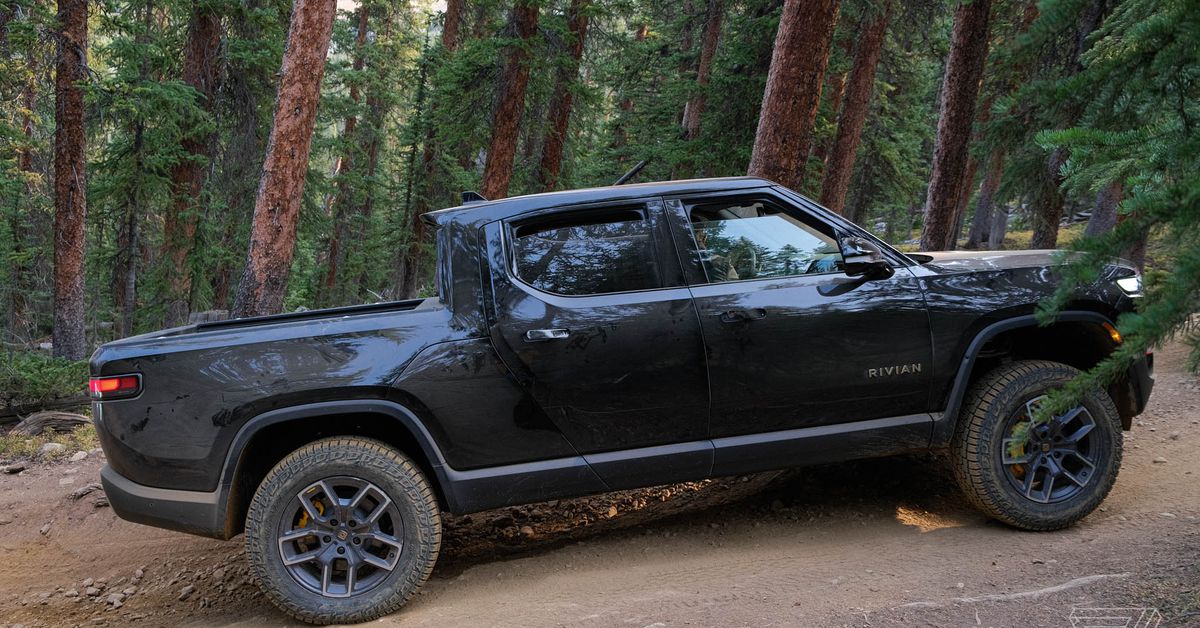Rivian, the buzzy electric vehicle company backed by Ford and Amazon, reported a net loss of $1.59 billion in the first quarter of 2021 based on $95 million in revenue. The company said it delivered 1,227 vehicles to customers during the past three months, bringing its total number of deliveries to 2,148.
Rivian said it now has over 90,000 reservations for its R1T and R1S electric vehicles, up from 83,000 as of its last update in March. The company says that as of May 9th, it has produced approximately 5,000 vehicles, including its electric truck, SUV, and delivery van for Amazon.
The company released its first-quarter earnings after a particularly bad week, with its stock dropping to all-time lows on the news that one of its prominent investors, Ford, was selling about 8 percent of its shares in Rivian. The company’s stock price was down over 78 percent since the start of the year.
Rivian’s stock price has been slipping since its historic IPO last year, when the company debuted on the public market at an overall valuation of over $80 billion. Since then, supply chain constraints and manufacturing woes have slowed its progress. Like other automakers, Rivian is having trouble securing the materials that are needed to manufacture lithium-ion batteries for its vehicles, in addition to the semiconductor chips needed to power many of its high-tech features.
But in a call with investors, Rivian CEO RJ Scaringe said the end is near for supply chain disruptions. “We believe we’ve seen really the worst of it, or sort of the valley, if you will, of the supply constraints,” Scaringe said. “And the suppliers are leaned in.”
Adam Jonas, an analyst for Morgan Stanley, noted that Rivian’s enterprise value, which is essentially its market capitalization minus less net cash, is “currently just above zero dollars.” This sends the message to investors that unless Rivian can get its supply chain under control, it may have to dilute shareholders.
In response, Rivian CFO Claire McDonough said that Rivian has $17 billion in cash-on-hand, which should allow it to ramp up production at its Normal, Illinois plant to the point of profitability.
:no_upscale()/cdn.vox-cdn.com/uploads/chorus_asset/file/22883204/mclark_210922_4776_0031.jpg)
Photo by Mitchell Clark / The Verge
“We have the ability to live within our means,” she added, “as as we think about the profitability that Normal itself can deliver for Rivian that will allow us to really pace the ongoing growth of the business and ultimately allows us to have that flexibility on when and how we would raise additional capital on a go forward basis.”
Rivian has responded by pulling back on its ambitions and maintaining a more modest schedule for the rest of the year, only producing 25,000 vehicles over the course of 2022, according to its prior earnings report. In its Q1 earnings, Rivian says it remains on track to produce that number of vehicles this year.
Rivian CEO RJ Scaringe said that the company has $17 billion in cash-on-hand, and remains on track to launch its next EV platform, R2, at a new factory in Georgia in 2025. R2 will serve as the basis for a new, compact SUV that Rivian says will be more affordable than its first two vehicles, both of which retail for over $70,000. The company’s R1 platform is the dual-motor architecture that undergirds the R1T truck and R1S SUV.
In the first quarter, Rivian produced 2,553 vehicles, but only delivered 1,227 of those vehicles to customers. Asked about this gap, McDonough said it was the result of being a direct-to-consumer company without a traditional dealer network to serve as distribution hubs.
The earnings also come as Ford has begun delivering the first F-150 Lightning electric pickup trucks to customers. While Rivian has the distinction of being the first to bring its electric truck, the R1T, to market, Ford’s electrified F-series is expected to drive more customers to consider switching to EVs.
